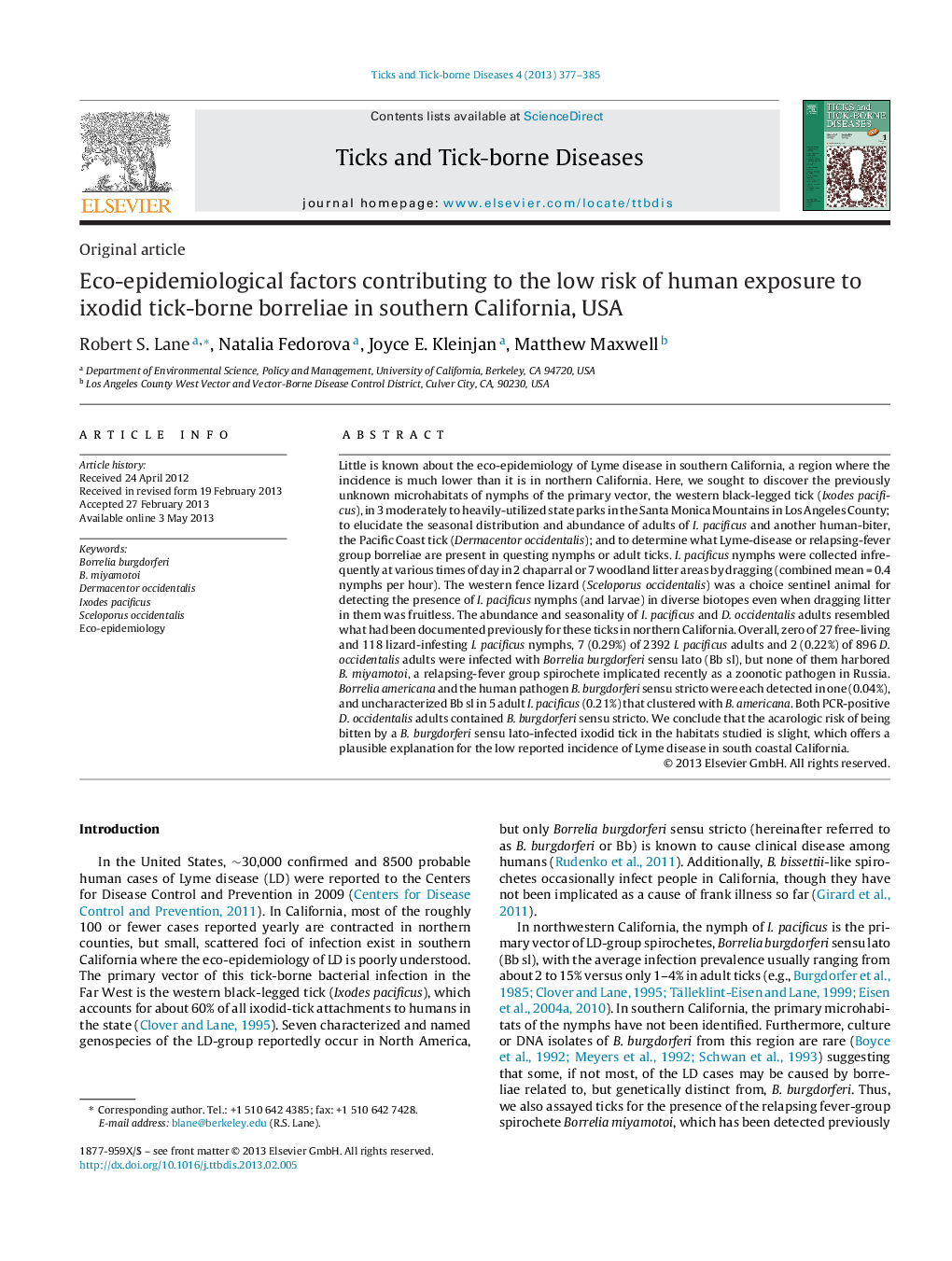| Article ID | Journal | Published Year | Pages | File Type |
|---|---|---|---|---|
| 2474207 | Ticks and Tick-borne Diseases | 2013 | 9 Pages |
Little is known about the eco-epidemiology of Lyme disease in southern California, a region where the incidence is much lower than it is in northern California. Here, we sought to discover the previously unknown microhabitats of nymphs of the primary vector, the western black-legged tick (Ixodes pacificus), in 3 moderately to heavily-utilized state parks in the Santa Monica Mountains in Los Angeles County; to elucidate the seasonal distribution and abundance of adults of I. pacificus and another human-biter, the Pacific Coast tick (Dermacentor occidentalis); and to determine what Lyme-disease or relapsing-fever group borreliae are present in questing nymphs or adult ticks. I. pacificus nymphs were collected infrequently at various times of day in 2 chaparral or 7 woodland litter areas by dragging (combined mean = 0.4 nymphs per hour). The western fence lizard (Sceloporus occidentalis) was a choice sentinel animal for detecting the presence of I. pacificus nymphs (and larvae) in diverse biotopes even when dragging litter in them was fruitless. The abundance and seasonality of I. pacificus and D. occidentalis adults resembled what had been documented previously for these ticks in northern California. Overall, zero of 27 free-living and 118 lizard-infesting I. pacificus nymphs, 7 (0.29%) of 2392 I. pacificus adults and 2 (0.22%) of 896 D. occidentalis adults were infected with Borrelia burgdorferi sensu lato (Bb sl), but none of them harbored B. miyamotoi, a relapsing-fever group spirochete implicated recently as a zoonotic pathogen in Russia. Borrelia americana and the human pathogen B. burgdorferi sensu stricto were each detected in one (0.04%), and uncharacterized Bb sl in 5 adult I. pacificus (0.21%) that clustered with B. americana. Both PCR-positive D. occidentalis adults contained B. burgdorferi sensu stricto. We conclude that the acarologic risk of being bitten by a B. burgdorferi sensu lato-infected ixodid tick in the habitats studied is slight, which offers a plausible explanation for the low reported incidence of Lyme disease in south coastal California.
